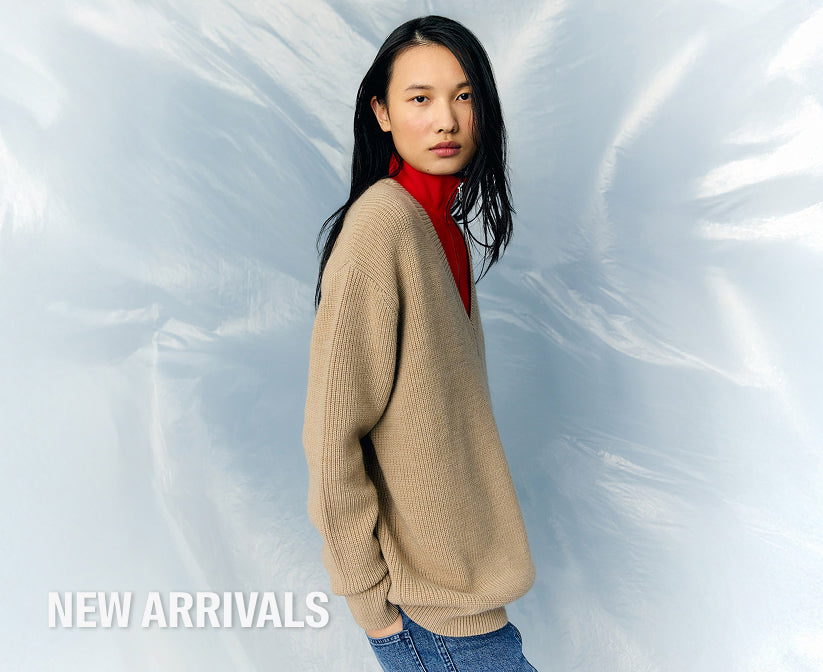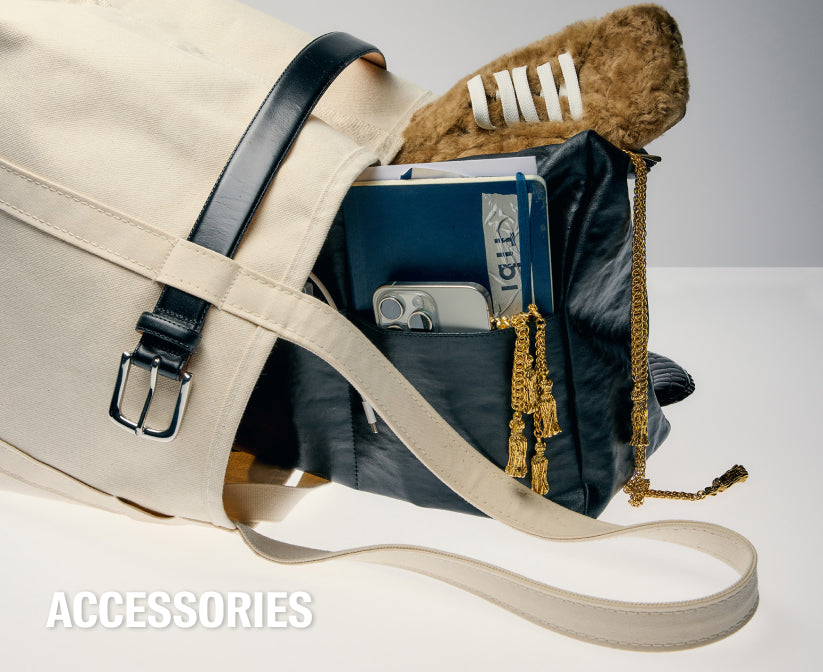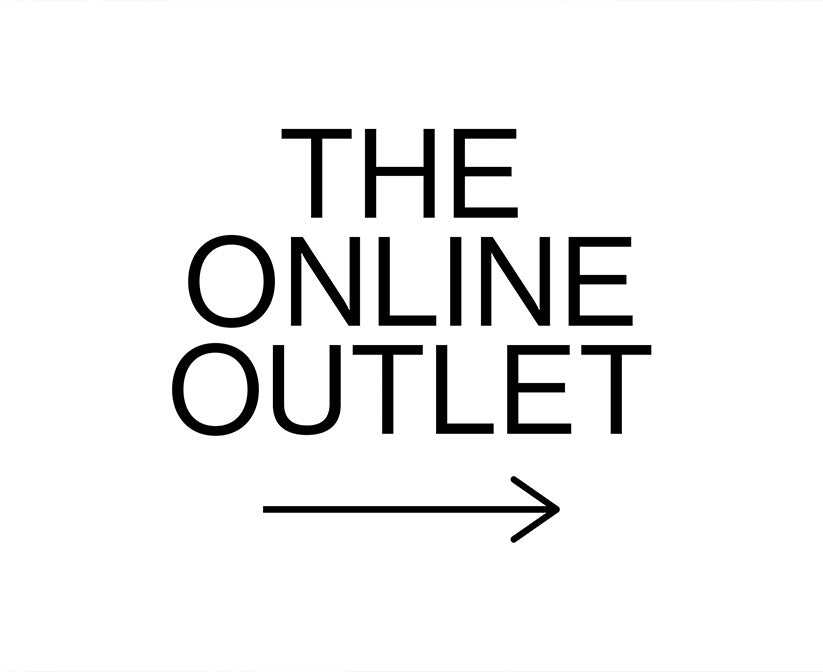Quite anything can feel overwhelming, until it doesn’t. Getting to that point involves learning, hard work, and a true desire to understand yourself and others around you. Personal style is like this. Don’t let anyone fool you that it’s about simply understanding that pink pairs with red or knowing that you love that picture of Kate Moss in a biker jacket and wellies. It’s worth it to take the time to understand what drives you or why some things speak to you while other things fall on deaf ears or even cause an inexplicable, negative visceral reaction. You see, our personal style reflects a convergence of many elements, often invisible to the naked eye and even more often, invisible to ourselves. Until we bring them into focus.
If there’s just one thing you take away from this Venn diagram, I hope it’s this: personal style is, indeed, personal. It is impossible for someone else to judge what “looks good” on you because such a conclusion heavily depends upon what we “feel good” wearing. And what makes us feel good goes way beyond our hip measurements and the flattering curve of a dress. How we feel in what we wear results from the interplay of myriad considerations. These are the details, thoughts and feelings that your friends, your family, onlookers, commenters on social media, do not know, could not possibly know, and do not need to know. Your knowing is all that matters, so you can make better decisions and respond more confidently when someone believes differently (it’s them, not you).
I’ll start with the really easy one:
GEOGRAPHY
Terrain and temperature. Our physical environment dictates daily realities; those tactical decisions that can be a mix of the rote and the spontaneous. If it rains all the time, a wardrobe of ballerina slippers and chiffon is hardly functional. If it is scorching hot most days of the year, a shearling coat may just not make sense. It does not mean we shy from exploring or buying, but geography supplies a data point to help us stay measured and manage how much we indulge in the frivolous (which I love doing, but with intent and consideration).
Even in frigid weather, a layering piece can stay incredibly chic and still do the hard work. The fine merino wool (a.) is fantastic for this purpose. A convertible cashmere sweater (b.) with sleeves that can be worn arms in, or out is also great. Tied at the neck like a scarf or cross-body for uber-style gives myriad options. Sometimes when the weather’s wet and cold, we crave the ultimate original like the L.L. Bean boot because the O.G brings on the chic. Across many temps and turfs, the nylon jogger (d.) brings it every time too.
HISTORY
What decade bookended your formative years? If it was the 80s, then Balenciaga’s strong shouldered Spring ‘24 season may mean something entirely different to you than to someone whose reference point aligns with the bright satin slip dresses of the early aughts (think: Nicole Richie or the 90s plaid flannel shirts of Kurt Cobain). Remember that your history can help frame why you may be pushing through a feeling if you are highly intrigued by a certain trend. As a designer, I reject the idea of literal interpretations of the past; there’s too much historical baggage. My challenge is to make it feel modern and now. Let’s use the 80s as an example. If I dig deeper, what bothered me about the aggressive shoulders back then was the absurd costume of it all. It wasn’t just a strong shoulder, it was usually accompanied by big hair, big jewelry, and big, bold colors. Big, big, big. When I reduce it to a combination of adjectives, I can start to identify how I would change it up – not with the sole aim to force myself to wear it, but rather to understand why I’m curious about it and what I would do differently, given a clean slate, to make it work. In this case, it works as a tool in my closet as the “big” to my “skin and slim” (pg. 94 in The Creative Pragmatist Book). The principles of color flow in as well: I’m not wearing a red leather strong shoulder jacket, but a fine lightweight menswear check in grey. I’m here for this.
EXPERIENCE
The invisible weight on our proverbial shoulders. Did you spend over a decade waitressing? I did. Wearing all black and white in a flat texture has me fearful that you’ll demand to know why you haven’t been served your coffee yet. Did you grow up in a place that was deeply religious? Were you deeply religious? Catholic school? All of this may create associations with longer lengths or with navy and green plaids that go well beyond the vibes that may be communicated from a trend report. For many, me included, there are associations we simply can’t push past, because they inevitably make us feel a certain way. For me, it’s clogs. I appreciate them. They’ve been done by people I respect (Phoebe Philo). And they’re worn by people whose style I admire (Leandra Medine). But no, hard stop for me. Even if the logo stamp is Celine or Hermes, clogs make me feel basic or in costume. This is clearly my hang up and you can see how personal it is. It exemplifies the concept that there is no “good” or “bad” style, but rather our own personal style, comprised of a bundle of data points that come about from simply living one’s life.
You can already see that understanding yourself better diminishes any sting when someone says how much they dislike what you are wearing (or have designed). Knowing why you feel a certain way about something empowers you to defend those decisions, if to no one else but yourself. And that’s where confidence is born from. You’re unlikely to change my opinion that clogs are bad, and that’s ok. It has nothing to do with you and everything to do with me. See?
The Pizza uniform on the left shares no vibes with the chic look on the right. I pushed past my waitering vibes by adding texture and proportions.
PHYSICAL SELF
I hate my legs––always have and, probably, always will. As a designer who creates along the Creative Pragmatist scale, and as a business owner, I would be foolish to allow a body part to dictate my designs. Traci and Sarah love a mini or a short, so it is definitely in our wheelhouse. You see, this is a “me” problem. There are a few other things I could name that are on my no-go list, most of them an underlying outcome of my experiences and geography. I’m not fond of certain yellow browns when I wear them near my face; I tend to look like I don’t feel well and somehow, by the end of the day, I convince myself that maybe there is indeed an itch in the back of my throat. If you understand what controls both positive and negative reactions, you’ll know better in the future why that black dress that your friends shrieked made you look so sexy, is in the back of your closet. But that interesting piece you bought with the full hips and curved backside has been your go-to every time you want to feel your best? You’ll also start to understand when you are limiting yourself to clothing to amplify certain body parts– a slim waist, a toned arm. Given that personal style is a congruence of many factors, relying on just one attribute for your clothing choices (“flattering”) will leave you feeling a bit uninspired.
Soft Lambswool Crewneck Easy Pullover, Superfine Wool Flannel Paneled Cargo Skirt, Red Cashmere Socks, Guy Sandal in Red Brown, Skinlike Mercerized Wool Shrunken Cardigan, Skinlike Mercerized Wool Soft Sheer Pullover, Lutz Knit Asymmetrical Pleat Stella Pant, Classic Socks in Mint, Beryen Naplack Sandal
Just because I tend to cover my legs, doesn’t mean I’m relegated to a more conservative style. Your physical preferences don’t dictate how modern and chic you can feel, they’re just a point of information that feeds into your choices.
FAMILIAL
The best of us have done it, all of us have experienced it: that comment given or received, often by someone quite close to us, that plays on repeat in our head. “Your face looks so fresh when you wear a colored lip.” “Those skinny jeans make you look so much taller.” “Don’t hide your figure under all those baggy clothes.” While this exercise is about having you understand the motivations behind the choices you make and the feelings you experience, it’s also about understanding that other people have experienced the same factors. Not the same experience, but the same factors. Every time your mom, the coworker, the well-intentioned friend offers an opinion, that opinion reflects their Venn diagram, rather than an objective observation of you. And when you understand this, you are emboldened to let these comments glide right off. You can’t stop the comments – people are human, they share, they overshare. But understanding their mindset just a little bit better can help you control how you react if you do at all. Style nirvana is when you get to the point when you receive others’ comments simply as a reflection of them., not you.
Your best friend may just see big jeans (a.) when you know that can’t begin to describe how chic and interesting you feel in a sculpted denim. The slim bodysuit with ties may be thought of as an odd choice to your coworker, but since they’re not the one wearing it, it hardly matters. The mom that believes they taught you better than to wear white in the winter (b.) may be confused by this dress, worn with a red sock and a men’s checked overcoat. But you aren’t. For good reason, because it’s amazing. I think so, anyways.
EMOTIONS
It’s only human nature to associate items with how we’ve felt during different moments in our life. I have a special place for a lace nightgown I wore after my first son was born, ditto for a Donna Karan suit I wore on an important interview long ago. The person on the subway next to me? They can’t know what the bracelet I’m wearing means to me. And that’s ok, because it’s personal. Very. So, it stands to reason that you have items in your closet that have feelings correlated to them that may not necessarily be detected by anyone.
The sculpted sweatpant and cut out sleeve sweatshirt. It’s one of those items that I add in new colors each season, and it holds a special place in my heart. It was my Christmas morning outfit in 2020 when I hadn’t seen my parents for over a year. It was my Thanksgiving outfit in 2022 with my boys. It was my long-haul flight outfit to Dubai earlier this year to spend time with an incredible team. But to you, it may just be a beautiful, interesting, and functional top.
It’s personal. Understanding who you are is a critical step to developing your personal style. The Venn diagram will help you break it down, make better choices, and engage in productive discourse around your style. See?
Explore Tibi.



